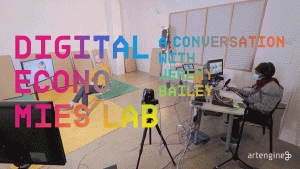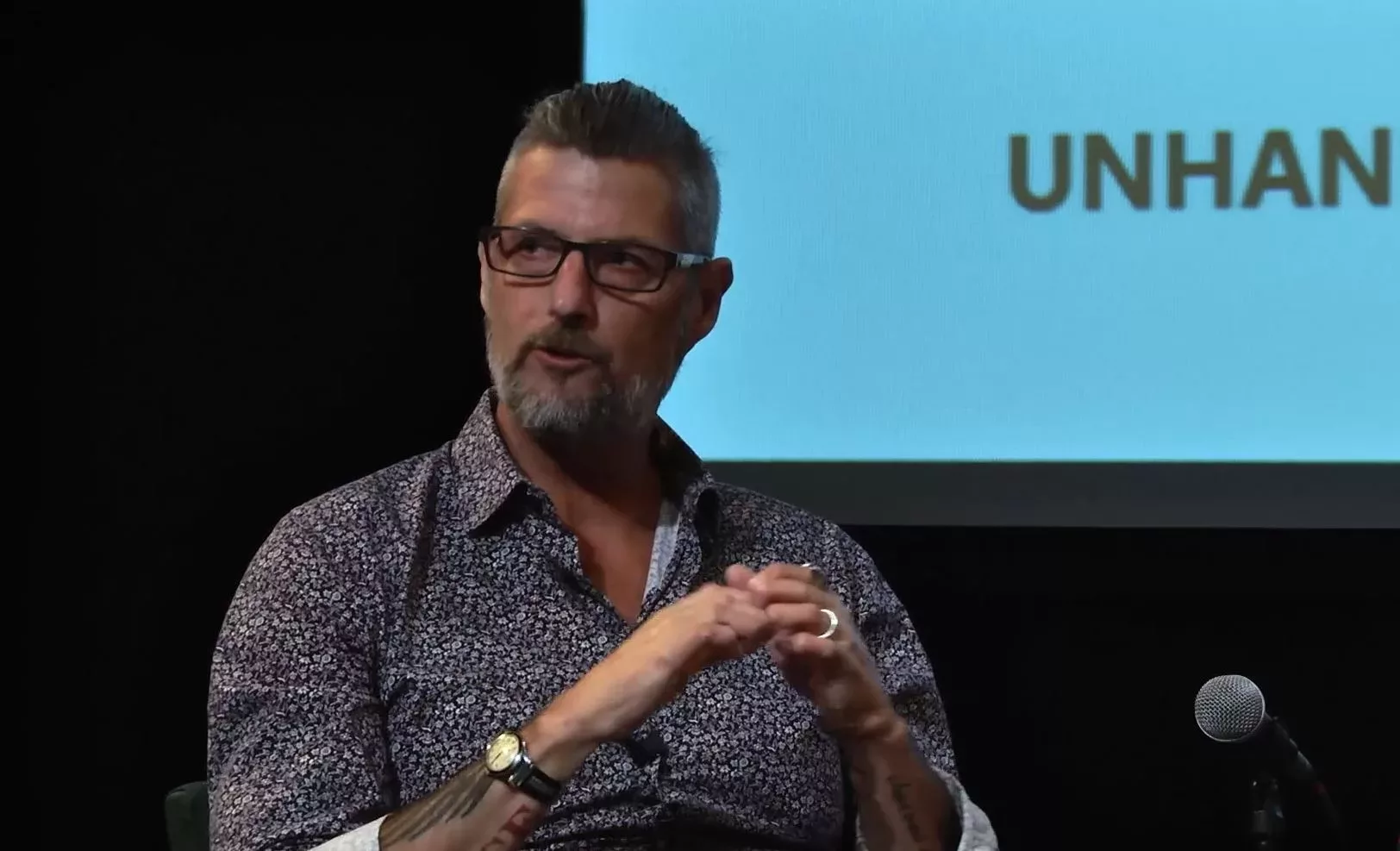Valerie Lamontagne delivered an electrifying artist talk that traversed the dynamic intersection of fashion and technology. With a whimsical twist, Lamontagne embarked on a journey through the alphabet, offering a visual compendium that encapsulated the multifaceted landscape of wearable technology.
From “Art” to “Big Data,” Lamontagne’s discourse navigated through diverse realms, highlighting the fusion of artistry, innovation, and functionality within the realm of wearable tech. Drawing upon historical references such as Oskar Schlemmer’s Triadic Ballet and contemporary pioneers like Anouk Wipprecht, Lamontagne illuminated the collaborative ethos driving this emergent field.
Emphasizing the absence of a hierarchical structure within wearables, Lamontagne underscored the inclusive nature of this epistemic culture, where disciplines like textile, fashion, and engineering converge in a symphony of creativity. Through examples spanning biofabrication, interactive garments, and health monitoring, she showcased the transformative potential of fashion tech in enhancing our daily lives.
As Lamontagne concluded her presentation, the audience was left with a profound sense of curiosity and contemplation, poised to explore the myriad possibilities that await at the nexus of fashion and technology. With her insightful commentary and engaging delivery, Lamontagne offered a captivating glimpse into the boundless realm of wearable artistry.
This presentation was part of the symposium Unhanded. In this panel we ask about the variety of new relationships with materials that emerging with the increasing ubiquitousness of digital technologies. With the increased complexity of tools we wonder how do we learn about materials? How do we get to know them? How do we share this knowledge? We can now know the molecular structure of wood or metal without touching it. Is this a more intimate relationship than working directly with our hands? Does it matter? If the objects coming out of digital and mechanical processes are more removed from our handywork, how might they carry the mark of the machine? Should we be able to read the machine in the material?
The University of Concordia invites you to donate to a fund to honour Valerie’s legacy and memory.
To donate, please visit the following link: https://engage.concordia.ca/donate
Valérie Lamontagne was an artist-designer and PhD scholar who specialized in “Performative Wearables: Bodies, Fashion, Technologies and Laboratory Cultures.” She conducted her research at Concordia University, where she also taught in the Department of Design & Computation Arts. Lamontagne curated and collaborated on numerous design and media arts exhibitions and events, notably “The Future of Fashion is Now” at Museum Boijmans Van Beuningen in Rotterdam, Netherlands (2014); “TechnoSensual” at MuseumsQuartier in Vienna, Austria (2012); “Clothing Without Cloth” at V2_ Institute for the Unstable Media in Rotterdam, Netherlands (2011); “Electromode” at the Vancouver Winter Olympics, Canada (2010); “Sartorial Flux” at A+D Gallery, Columbia College in Chicago, USA (2006); “Ellipse” at Musée National des Beaux-Arts du Québec, Canada (2002); and “Location / Dislocation” at the New Museum in New York, USA (2001). Her artworks and designs were featured internationally across festivals, galleries, museums, and in various magazines and publications. She was the owner and designer of 3lectromode, a wearable electronics atelier known for its avant-garde crafting and consulting in fashionable technologies. Additionally, she founded Agence Simultané, a post-digital incubator and production company.
From 2001 to 2017, Valérie Lamontagne was an adjunct professor at Concordia University, where she earned a PhD with a dissertation entitled “Performative Wearables: Bodies, Fashion and Technology.” In February 2018, the Amsterdam University of Applied Sciences appointed her a professor of Fashion Research and Technology at the Amsterdam Fashion Institute. Her career was cut short by her untimely death in 2019.
Wearables as a kind of epistemic culture doesn't have a hierarchy right now.

Famous New Media Artist Jeremy Bailey helped shape the structure of the Digital Economies Lab and here we discuss their vision for artistic prosperity in the 21st century. We chat about artists’ complicated relationship to capital and how we are in an exciting moment of transformation. Join us, as we delve into questions of value, the pace of production, and our perception of reality, augmented or not.

This discussion brings together artist, scholar and Director of Creating Knowing and Sharing: The Arts and Cultures of First Nations at the Canada Council for the Arts, Steven Loft; craft historian Sandra Alfoldy; architect Tom Bessai; and fashion designer, Valerie Lamontagne, to consider the way we talk about making.